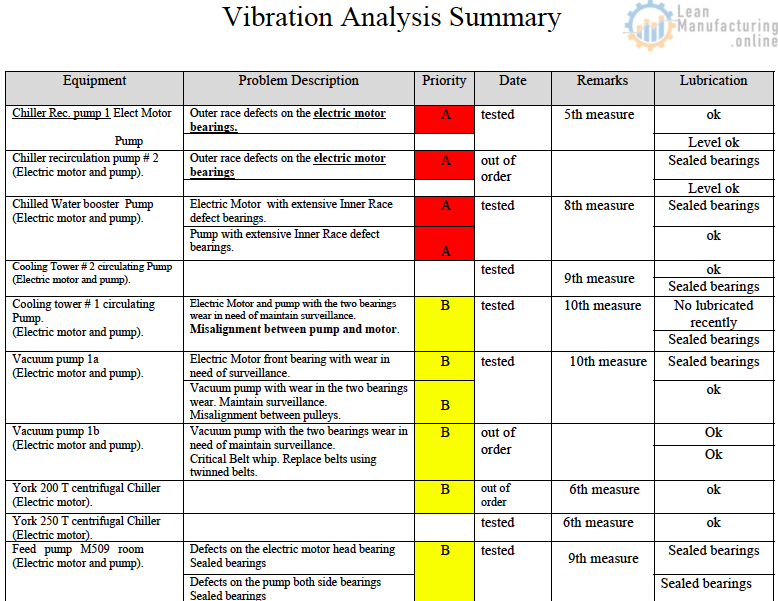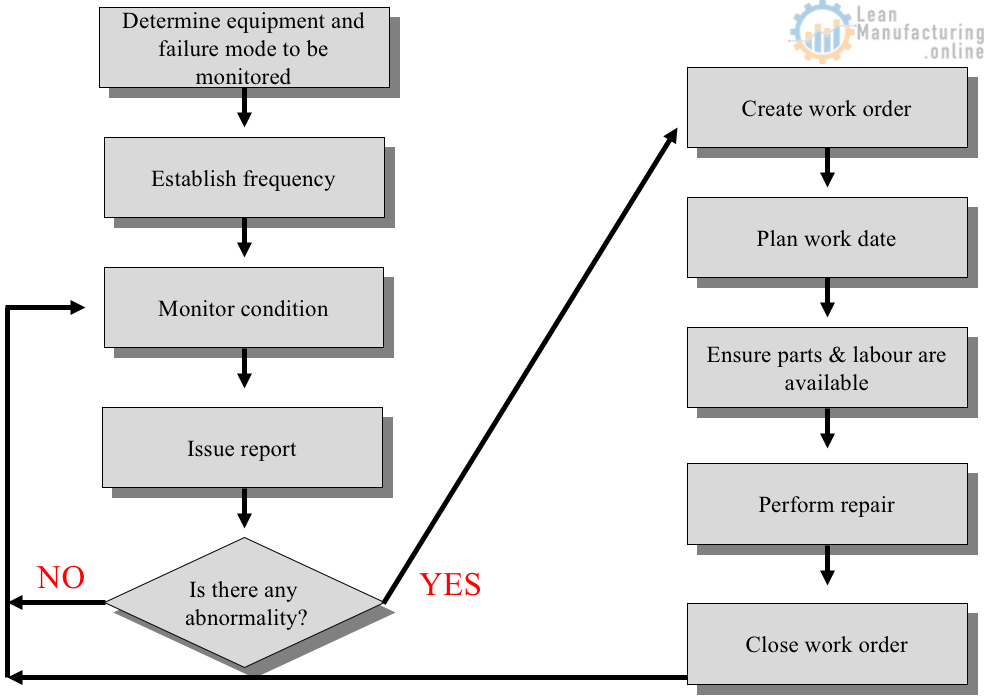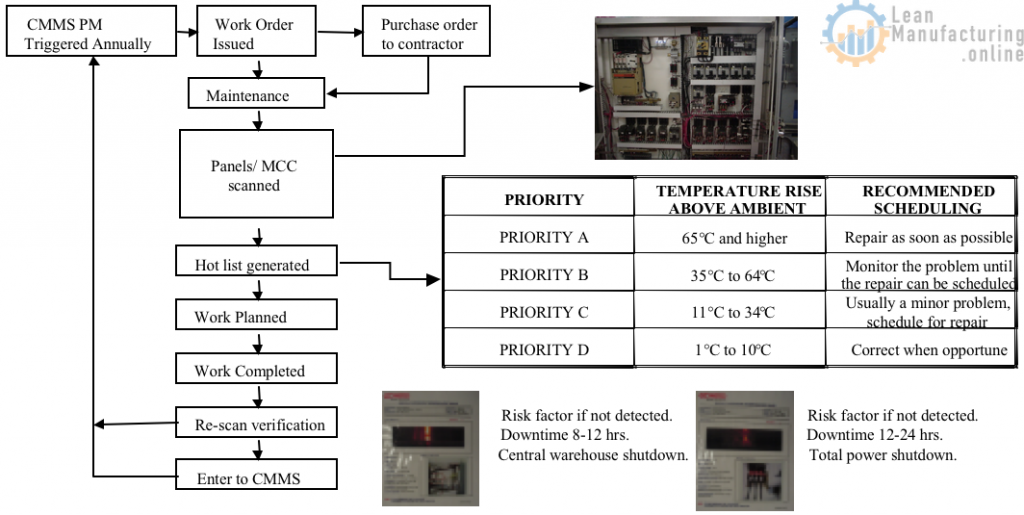After establishing successful Preventative Maintenance program, an element of predictive maintenance needs to be considered. Before starting to gather data to analyze it, priority criteria must be developed so appropriate steps will be taken to either correct defects or continue monitoring and plan future repairs.
Example of Priority Criteria – Vibration Analysis
Priority A
- Advanced anomaly noted; for example broken gear tooth or advance bearing defect,
- Rapid ascendant vibration trend indicative of increased degradation; failure may be imminent,
- Any defect noted on an extremely critical or safety-related piece of equipment,
- Vibration levels distant above industry norm for a particular component. Recommended repairs to be instituted in a timely fashion or at next earliest opportunity.
Priority B
- Any Priority C anomalies which have begun to gradually trend ascendant,
- Initial detection of most bearing defects with no prior machine history,
- Any defect noted which, left unattended, will result in further cumulative damage to a machine; i.e., coupling misalignment resulting in bearing damage.
- Recommended repairs to be completed during the next available outage period, if not sooner. Continued operation as a Priority B may result in the machine degrading to Priority A condition.
Priority C
- Initial detection of a minor anomaly,
- Initial data collection following corrective maintenance (status update),
- Any Priority B faults which have been re-evaluated as not trending upwards and not a long-term reliability threat. Recommended repairs to be performed at a convenient time, unless otherwise specified.
Example of Vibration Analysis

Definition of Predictive Maintenance
Predictive maintenance compares the trend of measured physical parameters against known engineering limits for the purpose of detecting, analyzing, and correcting problems before failure occurs.
- Detection of Failures. This is the first technique of predictive maintenance, and is aimed at early discovery of failures and their early repair.
- Prediction of Failures and Defects. This is predictive maintenance itself. The focus is on quality maintenance that leads to prediction of quality defects of the functional – deterioration type.
- Prediction of Remaining Service Life. This is where natural deterioration is ending the life cycle of the equipment and plans should be made to replace the equipment.
Most Common Predictive Maintenance Methods
- Oil Analysis
- Vibration Analysis
- Thickness Testing
- Infrared Analysis
- Laser Transit Alignment
- Dust Collectors Testing
- Steam Traps Testing
- Wear Particle analysis
- Motor Surge & Current Analysis
- Ultrasonic Testing
Predictive Maintenance Flow

Predictive Maintenance Example – Infrared Inspection
Equipment used DCI Thermal Scanner. Condition Based Maintenance (CBM) is performed on all Electrical Panels, Distribution Boards and Motor Control Centers. This activity is outsourced at present as the expenditure on diagnostic equipment and associated experience versus actual usage (annual) is not economically viable. Plant maintenance electricians accompany the contractor during the scan, and also effect all necessary repairs.

















